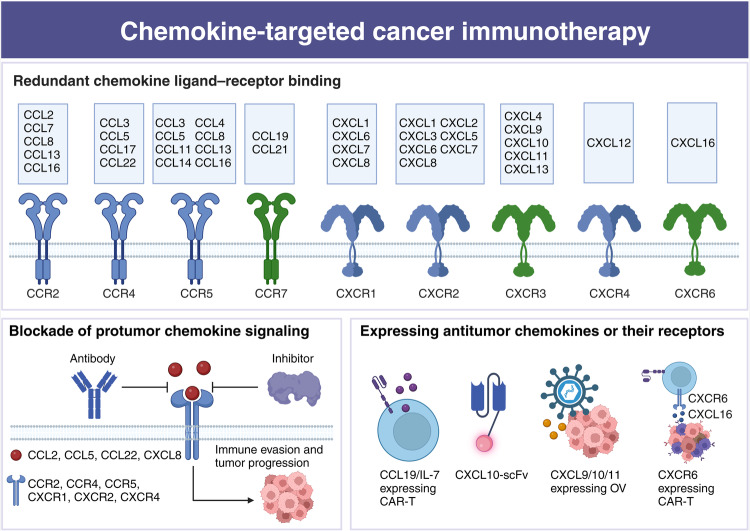Fig. 6.
Chemokine-targeted cancer immunotherapy. The diagram presents the complexity of chemokine ligand-receptor interactions and their implications for cancer immunotherapy. The top section identifies the chemokine ligands (e.g., CCL2, CCL7, CXCL9) and their corresponding receptors, categorized by their role in tumor progression, with antitumor receptors labeled in green (e.g., CXCR3, CXCR6) and protumor receptors in blue (e.g., CCR2, CXCR1, CXCR2). The bottom left panel highlights the blockade of protumor chemokine signaling using antibodies and inhibitors targeting specific CCL and CXCL chemokines and their receptors to prevent immune evasion and tumor progression. The bottom right panel showcases the expression of antitumor chemokines or their receptors, such as CCL19/IL-7 expressing CAR-T cells, CXCL10-scFv, CXCL9/CXCL10/CXCL11 expressing oncolytic viruses (OVs), and CXCR6 expressing CAR-T cells, as innovative strategies to enhance antitumor immunity. This figure encapsulates the dual approach of inhibiting tumor-promoting chemokines and augmenting antitumor chemokines to therapeutically modulate the tumor microenvironment. (Created with BioRender.com)

